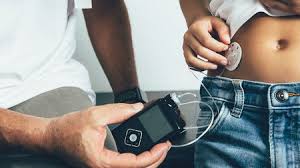According to the reports by the American Diabetes Association, the number of children and adults who have type 1 diabetes has exceeded the 1 million mark. The Disease Control and Prevention Centre, CDC, reported that type 1 patients make up 5% of all the diabetes patients in the country.
Currently, wearing a glucose monitor or pricking the fingers multiple times during the day remains the only way to keep the blood glucose in check. According to the results, the patients have to take insulin doses to restore the level to the recommended level.
But recently, the New England Journal for Medical Science has reported the trail of new technology. It has the potential to replace the conventional methods of Insulin administration in future.
The new technology makes the use of closed-loop control devices or artificial pancreas to check the blood glucose level and regulate it automatically. It has an integrated pump that injects a hormone into the blood when the insulin level becomes low.
Dr Griffin P. Rodgers, the NIDDK’s Director, said that the new technology has the potential to lower the daily burden of insulin level maintenance. In that way, the device will also help in reducing complications of nerve, kidney and eyes that come with diabetes.
During the six month trial, more than 100 people used the closed-loop control device, and 56 others went for sensor-augmented pump therapy. Participants assisted the researchers to check the device data in a few weeks.
The targeted range of blood sugar was 70 to 180 milligrams/ deciliter for the study. The researchers wanted to compare the periods that the patients of both groups remained in the targeted zone for the whole day.
Those patients with the closed-loop control device remained in the zone 2.6 hours more than they usually would. However, there was no significant improvement in the other group.
The Director of UVA centre for Diabetes Technology, Boris Kovatchev, believes that the device can take the glucose control methods to a new height. The researchers’ team has contacted the FDA for the permissions to make the device available in the market.

